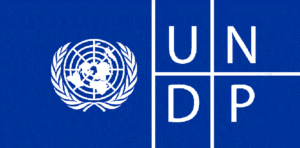The 2019 Global Multidimensional Poverty Index
UNITED NATIONS, 29 Jul 2019
UN Development Programme – TRANSCEND Media Service
11 July 2019 – The 2019 Global Multidimensional Poverty Index (MPI) data and publication “Illuminating Inequalities” released today shed light on the number of people experiencing poverty at regional, national and subnational levels, and reveal inequalities across countries and among the poor themselves.
Jointly developed by the United Nations Development Programme (UNDP) and the Oxford Poverty and Human Development Initiative (OPHI) at the University of Oxford, the 2019 global MPI offers data for 101 countries, covering 76 percent of the global population.
The MPI provides a comprehensive and in-depth picture of global poverty – in all its dimensions – and monitors progress towards Sustainable Development Goal (SDG) 1 – to end poverty in all its forms. It also provides policymakers with the data to respond to the call of Target 1.2, which is to ‘reduce at least by half the proportion of men, women, and children of all ages living in poverty in all its dimensions according to national definition’.
The publication “Illuminating Inequalities” previews ongoing research into trends over time for a group of countries including Bangladesh, Democratic Republic of Congo, Ethiopia, Haiti, India, Nigeria, Pakistan, and Peru. SDG target 10.1 calls for tracking the progress of the bottom 40 percent of the population compared with that of the total population – the publication includes case studies and a detailed analysis of the growth of those furthest behind – the ‘bottom 40%’.
Key findings
- Across 101 countries, 1.3 billion people—23.1 percent—are multidimensionally poor.
- Two-thirds of multidimensionally poor people live in middle-income countries.
- There is massive variation in multidimensional poverty within countries. For example, Uganda’s national multidimensional poverty rate (55.1 percent) is similar to the Sub-Saharan Africa average (57.5 percent), but the incidence of multidimensional poverty in Uganda’s provinces ranges from 6.0 percent to 96.3 percent, a range similar to that of national multidimensional poverty rates in Sub-Saharan Africa (6.3–91.9 percent).
- Half of the 1.3 billion multidimensionally poor people are children under age 18. A third are children under age 10.
- This year’s spotlight on child poverty in South Asia reveals considerable diversity. While 10.7 percent of South Asian girls are out of school and live in a multidimensionally poor household, that average hides variation: in Afghanistan 44.0 percent do.
- In South Asia 22.7 percent of children under age 5 experience intrahousehold inequality in deprivation in nutrition (where at least one child in the household is malnourished and at least one child in the household is not). In Pakistan over a third of children under age 5 experience such intrahousehold inequality.
- Of 10 selected countries for which changes over time were analysed, India and Cambodia reduced their MPI values the fastest—and they did not leave the poorest groups behind.
- There is wide variation across countries in inequality among multidimensionally poor people—that is, in the intensity of poverty experienced by each poor person. For example, Egypt and Paraguay have similar MPI values, but inequality among multidimensionally poor people is considerably higher in Paraguay.
- There is little or no association between economic inequality (measured using the Gini coefficient) and the MPI value.
- In the 10 selected countries for which changes over time were analysed, deprivations declined faster among the poorest 40 percent of the population than among the total population.
httpv://www.youtube.com/watch?v=4WRVZ2E8Ayk
TO READ THE FULL REPORT Go to Original – hdr.undp.org
Tags: United Nations
DISCLAIMER: The statements, views and opinions expressed in pieces republished here are solely those of the authors and do not necessarily represent those of TMS. In accordance with title 17 U.S.C. section 107, this material is distributed without profit to those who have expressed a prior interest in receiving the included information for research and educational purposes. TMS has no affiliation whatsoever with the originator of this article nor is TMS endorsed or sponsored by the originator. “GO TO ORIGINAL” links are provided as a convenience to our readers and allow for verification of authenticity. However, as originating pages are often updated by their originating host sites, the versions posted may not match the versions our readers view when clicking the “GO TO ORIGINAL” links. This site contains copyrighted material the use of which has not always been specifically authorized by the copyright owner. We are making such material available in our efforts to advance understanding of environmental, political, human rights, economic, democracy, scientific, and social justice issues, etc. We believe this constitutes a ‘fair use’ of any such copyrighted material as provided for in section 107 of the US Copyright Law. In accordance with Title 17 U.S.C. Section 107, the material on this site is distributed without profit to those who have expressed a prior interest in receiving the included information for research and educational purposes. For more information go to: http://www.law.cornell.edu/uscode/17/107.shtml. If you wish to use copyrighted material from this site for purposes of your own that go beyond ‘fair use’, you must obtain permission from the copyright owner.
